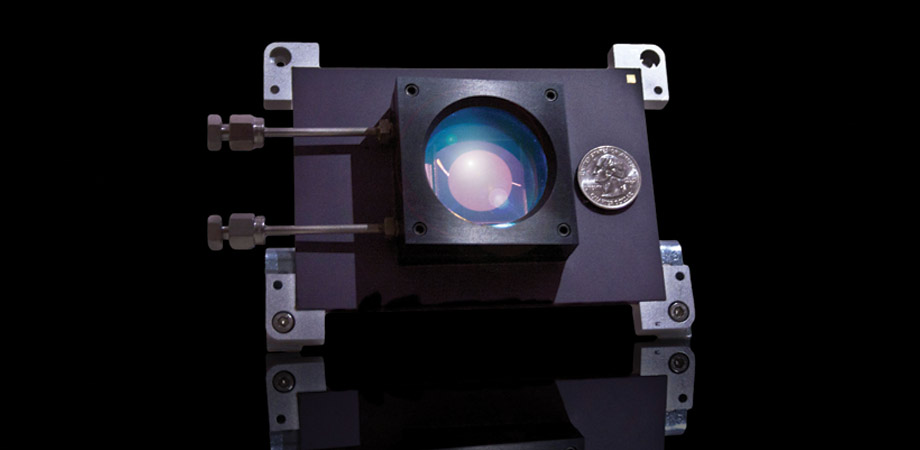
Eduardo Bendek
Senior Optical Scientist
Affiliation: NASA Ames Research Center (ARC)
Email: eduardo.bendek@nasa.gov
Phone: 520-628-0719
Professional Biography
Dr. Eduardo Bendek has more than 20 years of experience in astronomical instrumentation for ground- and space-based telescopes, with expertise in high-precision astrometry and high-contrast imaging for exoplanet detection. His skills span optical design, adaptive optics, wavefront control, project management, and systems engineering.
Dr. Bendek began his career at the Very Large Telescope (VLT) in Chile, where he spent five years maintaining and supporting a wide variety of astronomical instruments, including adaptive optics systems, infrared cryogenic instruments, and the Laser Guide Star Facility.
He later pursued a Ph.D. in Optical Sciences at the University of Arizona. For his dissertation, he designed, integrated, and managed a Diffractive Pupil (DP) astrometry laboratory funded by an APRA grant. Using this laboratory, he successfully validated the DP concept for detecting Earth-like exoplanets from space, advancing its Technology Readiness Level (TRL) from 1 to 3. Concurrently, he conducted three years of research in Ground Layer Adaptive Optics (GLAO) and Laser Tomography Adaptive Optics (LTAO) at the MMT 6.5m Observatory, contributing to the world’s first successful demonstration of Multi-Laser GLAO on-sky.
Dr. Bendek joined NASA Ames Research Center as a postdoctoral fellow, where he continued his astrometry work as PI of a TDEM grant to demonstrate simultaneous astrometry and coronagraphy. He later secured an APRA grant to perform high-fidelity demonstrations of the DP technology in a relevant environment. He was promoted to scientist at Ames, contributing to various projects, including serving as Deputy PI and Instrument Lead for the ACESat mission, a proposed 45-cm space telescope for high-contrast imaging of exoplanets. He also worked as an optical engineer developing novel wavefront control techniques for exoplanet detection.
In 2019, Dr. Bendek joined NASA’s Jet Propulsion Laboratory (JPL), where he developed the calibration system for the Roman Space Telescope’s Coronagraph Instrument (CGI). He supported the advancement of new optical technologies for NASA’s Exoplanet Exploration Program, including leading the development of the Roman CGI Multi-Star Wavefront Control mode, enabling the observation of binary systems such as Alpha Centauri down to Neptune-mass planets. He also contributed to the development of deformable mirror technologies, serving as Chair of the Deformable Mirror Technology Roadmap Working Group, and led the JNEXT TOLIMAN technology development effort for advancing high-precision astrometry of binary stars.
Currently, Dr. Bendek is a Senior Optical Scientist at NASA Ames Research Center. His work focuses on the design and implementation of integrated photonics coronagraphs for exoplanet detection. He also contributes to the Roman CGI Community Participation Program, leading efforts to implement Multi-Star Wavefront Control for the observation of Alpha Centauri. Additionally, he is studying the implementation of high-precision astrometry technologies to support exoplanet detection for the future Habitable Worlds Observatory (HWO) mission.
Education
Ph.D., 2012, University of Arizona, Optical Sciences
M.S., 2010, University of Arizona, Optical Sciences
B.S. and M.S., 2002, Universidad Catolica, Mechanical Engineering, minor in astrophysics.
Research Interests
- Exoplanets detection and characterization of earth orbiting nearby sun-like stars in particular studying Alpha Centauri.
- Instrument design in particular high-contrast imaging and high-precision stellar astrometry for exoplanet detection using reflex stellar motion.
- Space optics optical design, in particular reflective telescopes and off-axis systems
- Chasing eclipses. See our eclipse chasing from a plane here.
Selected Publications
Bendek, E., Baker, C. W., Noecker, C., Dube, B. D., Poon, P., Umana, M., Groff, T. D., Zimmerman, N., Bray, E., & Woodland, M. (2025). “Coronagraph verification stimulus and its application to validate the Roman Space Telescope Coronagraph Instrument,” J. Astron. Telesc. Instrum. Syst. 11(2), 021409 (2025), doi: 10.1117/1.JATIS.11.2.021409.
Riggs, A. J., Bailey, V., Moody, D., Balasubramanian, K., Basinger, S., Belikov, R., Bendek, E., Debes, J., Dube, B., Gersh-Range, J., Groff, T., Kasdin, N., Mennesson, B., Monacelli, B., Moore, D., Ruane, G., Sandhu, J., Shi, F., Sidick, E., Siegler, N., Sirbu, D., Trauger, J., White, V., Wilson, D., Weisberg, C., Wilson, R., Yee, K., & Zimmerman, N. (2025). “Flight masks of the Roman Space Telescope Coronagraph Instrument,” J. Astron. Telesc. Instrum. Syst. 11(2), 021403 (2025), doi: 10.1117/1.JATIS.11.2.021403.
Bendek, E., Allan, G., Ruane, G., Noyes, M., Mejia Prada, C., Eldorado Riggs, A. J., & Godoy, P. (2024). Demonstration of single-picometer deformable mirror wavefront control using high-resolution electronics. Proc. SPIE 13092, 130921X. https://doi.org/10.1117/12.3017631
Bendek, E. A., Noyes, M., Walter, A. B., Flores, C., Belikov, R., Sirbu, D., Mejia Prada, C., Tuthill, P., & Guyon, O. (2023), Status of NASA’s stellar astrometry testbeds for exoplanet detection: science and technology overview, Proc. SPIE12680, 126801H.
Bailey, V. P., Bendek, E., Monacelli, B. et al.,. (2023), Nancy Grace Roman Space Telescope coronagraph instrument overview and status, Proc. SPIE12680, 126800T.
Bendek, E. A., Belikov, R., Sirbu, D., Ruane, G., Riggs, A. J. E., Balasubramanian, B., Mejia Prada, C., & Pluzhnyk, E. (2021), Enabling binary stars high-contrast imaging on the Roman Space Telescope coronagraph instrument, Proc. SPIE11823, 1182311.
Bendek, E., Mamajek, E., Vasisht, G., Tuthill, P., Belikov, R., Nielsen, E., & Toliman Team (2021), TOLIMAN: An astrometry mission to detect Earth analogs orbiting the nearest sun-like stars, AAS, 53, 318.02.
Bendek, E., Tuthill, P., Guyon, O., Vasisht, G., Belikov, R., Larkin, K., Beichman, C., Shao, M., Mamajek, E., Sirbu, D., & Coyle, L. (2018), Precision astrometry mission for exoplanet detection around binary stars, Proc. SPIE10698, 106980G.
S. Thomas, R. Belikov, E. Bendek, “Techniques for High Contrast Imaging in Multi-Star Systems I: Super-Nyquist Wavefront Control” The Astrophysical Journal, 810:81 (14pp). 2015.
E. Bendek, O. Guyon, S. M. Ammons, R. Belikov, “Laboratory demonstration of astrometric compensation using a diffractive pupil,” PASP, Vol. 125, No. 932, pp. 1212-1225, 2013.
O. Guyon,J. Eisner, R. Angel, N. Woolf, E. Bendek, et al., “Simultaneous Exoplanet Characterization and Deep Field Wide Imaging with a Diffractive Pupil Telescope,” ApJ, 767, 11. 2013
E. Bendek, R. Belikov, O. Guyon, E. Pluzhnik, “Laboratory demonstration of coronagraphic imaging with a diffractive pupil,” PASP, 125, 924, 204-212, 2013.
M. Hart, N. M. Milton, C. Baranec, K. Powell, T. Stalcup, D. McCarthy, C. Kulesa & E. Bendek, “A ground-layer adaptive optics system with multiple laser guide stars,” Nature, 466, 727-729, 2010.
Selected White Papers
Bendek. E., et al., “The Science Value of Astrometry for Exoplanet Science”, Submitted to National Academy of Sciences, 2018
Accepted Proposals
Combined Astrometry and Direct Imaging (TDEM funded for $741,099, 2014 – 2017, PI) Successful high-precision astrometry technology development to TRL-4
Miniaturized DM Controller for Picture-C (APRA(Subaward) funded for $74,600, 2017, PI) Developed and tested a miniaturized DM controller for balloon mission. Flight unit delivered.
Gray Scale Modulated Retroflector Laser Communications (CIF funded for $50,000, 2017, Contractor PI, R. DeRosee). Developed and tested in the lab a novel medium-bandwidth concept.
Miniaturized DM Controller development (CIF funded for $50,000, 2016, Contractor PI, CS: D. Lynch), Innovative hybrid ASIC design of a miniaturized BMC Kilo DM Controller.
Configurable Aperture Space Telescope (CIF funded for $50,000 2014, Co-I, PI: K. Ennico) Developed a spherical primary mirror telescope to be assembled in space using satlets.
NASA WFIRST WP for multi-star wavefront control development for WFIRST, Co-I, Sept 2017.
NASA 16-SAT, PIAACMC Development for segmented apertures Co-I, Awarded August 2017.
NASA Missions
Roman Space Telescope: Designed and delivered the coronagraph instrument verification stimulus. Supported de implementation of the Multi-Star Wavefront Control coronagraph contributed mode
SHERA: SMEX mission proposal derived from TOLIMAN to detect and measure masses of exoplanet around nearby sun-like stars. Co-I science team.
TOLIMAN: Small Sat astrometry mission concept to detect and measure masses of planet around the nearest stars with emphasis on Alpha Centauri. Principal investigator
ACESat: SMEX Class mission for exoplanet direct imaging of the habitable zone of Alpha Centauri submitted on 2014, served as Deputy PI and instrument lead.
MAP: Micro Arcsecond Probe to detect and measure planets around nearby stars using astrometry. Co-I, lead of the distortion calibration using a diffractive pupil.
News Articles

Read the SPIE Article:
https://spie.org/news/photonics-focus/marchapril-2025/searching-for-new-earths-with-mems
Awards & Others
2023 NASA/JPL Voyager Award for sub picometer deformable mirror demonstration, 2023
2022 NASA/JPL Voyager Award for delivering calibration system for Roman CGI, 2022
2021 NASA/JPL Voyager Award for the Deformable Mirror survey, 2021
2016 NASA Exceptional Technology Achievement Medal
2012 NASA Postdoctoral fellowship award.
2008 FULBRIGHT International Science and Technology PhD Scholarship.


























